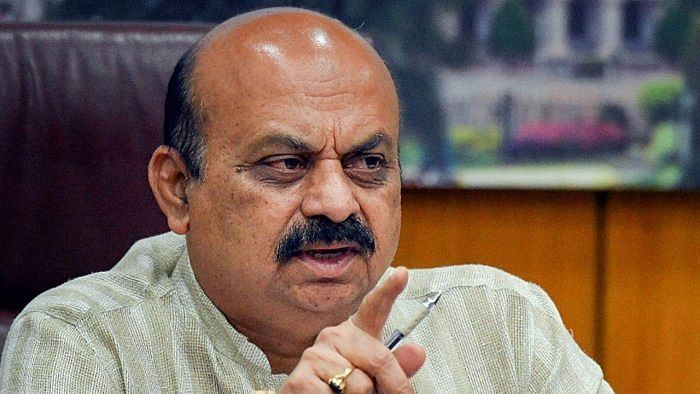
The developmental disparities between southern and northern Karnataka region are well-known. To address the regional imbalances in the growth and development, the state has adopted a number of measures since independence.
Notably, the state government constituted a High-Powered Committee for Redressal of Regional Imbalances (HPCRRI) under the chairmanship of Dr D M Nanjundappa, which submitted its report in 2002. The report identified 114 backward taluks in the state - 59 in the north and 55 in the south.
The committee recommended a number of steps to improve the living standards of people in the backward taluks, especially funds allocation through ‘special development plan’ and its utilisation for the development of the northern region. The report has, by and large, served the purpose of a reference document and as a template for the allocation of funds on the basis of regional deprivation and backwardness.
To tackle the repeated demand for a separate state in the Kalyana Karnataka region, the government has enacted the 98th Constitutional Amendment and gave the region a special status through the Article 371-J in 2012, which came into effect on October 1, 2013. Against this backdrop, it is necessary to understand the implementation of the provisions of the Article 371-J on the ground.
The decadal experience provides crucial insights on the issues, challenges and the way forward to address the development deficit and social justice.
The main provisions of the Article 371-J are (i) creation of a separation development board (ii) equitable allocation of funds (iii) equitable opportunities and facilities in education, vocational training including reservation of seats in education and employment for people belonging to this region.
Accordingly, the state government passed an order constituting the Hyderabad-Karnataka Region Development Board (now Kalyana Karnataka RDB) in 2013. The board has the responsibility to ensure equitable allocation of funds and facilitate equitable opportunities in education and public employment.
The development indicators after the implementation of the KKRDB order need a closer look. Nearly two decades after the formation of the high-powered committee, the latest data on development of taluks shows that the number of taluks in the most-backward category has fallen from 39 in 2002 to 38 in 2019-20, with 21 taluks remaining intact in the KK region.
Successive governments have indicated the commitment to implement the recommendations of the DM Nanjundappa committee; however, none from the political leadership has taken genuine efforts for the same. To illustrate, the committee has recommended 25.6 per cent for agriculture and the KKRDB has allotted only one per cent of the funds for the same.
Similarly, the share of industry, finance and trade are also not in consonance with the committee’s recommendation. Another glaring aspect is the discrimination within the funds allotted for the districts within the KK region (Kalaburagi got 73.97 per cent of funds under the chairman discretionary quota). Political interests within the KKRDB are effectively hindering the allocation of equitable resources, thereby perpetuating the backwardness in the region.
Some of the basic essential human indicators such as antenatal care for pregnant women (86.27 in 2015-16 - 87.31 in 2020-21), infant mortality rate and maternal mortality rate show a marginal decline yet have fallen short of the state’s average, and with that of the southern region.
The per-capita income of the districts in the KK region is lower than the rest of the state and the state’s average. This was captured through growth illumination using the night light luminosity with the help of Regional Remote Sensing Centre (RRSC) at the Indian Space Research Organisation (Isro) during 2015 and 2020.
The increase in growth illumination for the KK region is 14.2 per cent whereas it is 19 per cent for the state. These geospatial techniques provide insights on growth levels of physical and financial infrastructure in the region.
The functioning of the KKRDB and its implications on equitable development and social justice of the region needs emphasis. The KKRDB should also consist of an advisory council, perspective plan preparation, expert committee and implementation committee.
The performance audit conducted by the Comptroller and Auditor General of India for the year 2022 has observed that none of the institutional mechanisms are in place, thereby rendering ineffective implementation of the provisions of the Article 371-J.
One of the critical findings is that the government has not yet framed the rules for the implementation of Article 371-J and the board order of 2013. In response to the CAG, the government has said that certain rules and regulations have been submitted by the KKRDB and are awaiting the government’s approval.
The CAG report finds that the KKRDB failed to collect and analyse the data pertaining to agriculture, education, health, nutrition, skill development and industrial expansion, which are crucial to hasten development and address regional backwardness.
The CAG report rightly finds ineffective the functioning of the KKRDB in implementing the provisions of the 2013 order.
However, the board’s ineffectiveness is partly true; the other half of the truth is the politics played around it by local leaders, especially the chairman and its members.
Political intrusion has effectively compromised the functional autonomy of the KKRDB.
Without functional autonomy and freedom, the objectives of the KKRDB are difficult to achieve on the ground. The discretionary quota of the chairman needs some checks and balances and this can be brought about by implementing a cap on the financial allocation for one district by taking all the parameters into account.
This is essential to reduce the undue advantage of concentration of funds within one district in the KK region. The state government, especially the local political leadership, must allow the KKRDB to function independently with a considerable level of autonomy.
KKRDB being the outcome of a Constitutional Amendment needs people’s support and citizens’ participation through local government institutions in plan preparations. It will go a long way in
empowering the KKRDB as an independent institution to facilitate the region’s human development.
(The author is an independent researcher and writer on issues of governance and development)